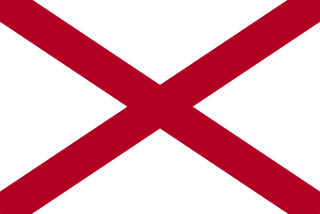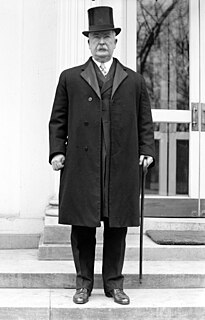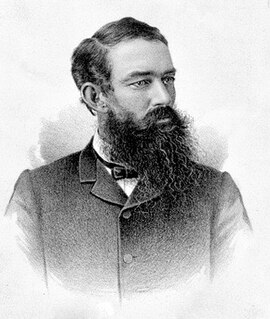
Clayton is a town in and the county seat of Barbour County, Alabama, United States. The population was 3,008 at the 2010 census, up from 1,475 in 2000.

The current flag of the state of Alabama was adopted by Act 383 of the Alabama state legislature on February 16, 1895:
The flag of the State of Alabama shall be a crimson cross of St. Andrew on a field of white. The bars forming the cross shall be not less than six inches broad, and must extend diagonally across the flag from side to side." – (Code 1896, §3751; Code 1907, §2058; Code 1923, §2995; Code 1940, T. 55, §5.)

George Corley Wallace Jr. was the 45th Governor of Alabama, a position he occupied for four terms, during which he promoted "low-grade industrial development, low taxes, and trade schools". He sought the United States presidency as a Democrat three times, and once as an American Independent Party candidate, unsuccessfully each time. He is best remembered for his staunch segregationist and populist views. Wallace was known as "the most dangerous racist in America" and notoriously opposed desegregation and supported the policies of "Jim Crow" during the Civil Rights Movement, declaring in his 1963 inaugural address that he stood for "segregation now, segregation tomorrow, segregation forever".

Emmet O'Neal was an American Democratic politician and lawyer who was the 34th Governor of Alabama from 1911 to 1915. He was a reformer in the progressive mold, and is best known for securing the commission form of government for the cities of Alabama.

William Dorsey Jelks was an American Democratic politician who was the 32nd Governor of Alabama from 1901 to 1907; he had been a newspaper publisher and editor. He also served as acting governor between December 1 and December 26, 1900 when governor William J. Samford was out-of-state seeking medical treatment. When Samford died on June 11, 1901, Jelks became governor. In 1904, Jelks fell ill and left the state for treatment; Russell Cunningham acted as governor in Jelk's absence from April 25, 1904 to March 5, 1905.

Thomas Goode Jones was an American Democratic politician who was the 28th Governor of Alabama from 1890 to 1894. Born in 1844 in Macon, Georgia and died in 1914 in Montgomery, Alabama.

Rufus Willis Cobb was an American Democratic politician who was the 25th Governor of Alabama from 1878 to 1882.

John Hollis Bankhead was a Democratic U.S. Senator from the state of Alabama between 1907 and 1920.

Park Monroe Trammell, an American politician of the Democratic Party, was the 21st Governor of Florida and represented Florida in the United States Senate from 1917 until 1936.

The Alabama gubernatorial election of 2006 occurred on November 7, 2006. Incumbent Republican Bob Riley defeated Democratic Lieutenant Governor Lucy Baxley. Riley garnered 21% of African Americans' votes.

Thomas Seay was an American Democratic politician who was the 27th Governor of Alabama from 1886 to 1890.

William James Purman was a Republican US Representative from Florida.

Robert Fulwood Ligon was the fourth Lieutenant Governor of Alabama. A Democrat, Ligon served Governor George S. Houston of the same political party from 1874 to 1876. Ligon also served in the United States House of Representatives.

The 2010 Alabama gubernatorial election took place on November 2, 2010. Republican Governor Bob Riley was term limited and unable to seek re-election. The party primaries were held on June 1, 2010, with a Republican runoff on July 13. In the general election, Republican Robert J. Bentley defeated Democrat Ron Sparks.

Elections in Alabama are authorized under the Alabama State Constitution, which establishes elections for the state level officers, cabinet, and legislature, and the election of county-level officers, including members of school boards.

The 2018 Alabama gubernatorial election took place on November 6, 2018, to elect the Governor of Alabama. Incumbent Republican Governor Kay Ivey, who took office on April 10, 2017, upon the resignation of Governor Robert Bentley, ran for election to a full term and won over Tuscaloosa mayor Walt Maddox. Ivey will be sworn into office on January 14, 2019. This is the first gubernatorial election since 2002 in which a Democrat won Tuscaloosa County and the first since 1990 in which neighboring Pickens County voted for a different candidate than Tuscaloosa.

The 1876 United States presidential election in Alabama took place on November 7, 1876, as part of the 1876 United States presidential election. Alabama voters chose ten representatives, or electors, to the Electoral College, who voted for president and vice president.




















